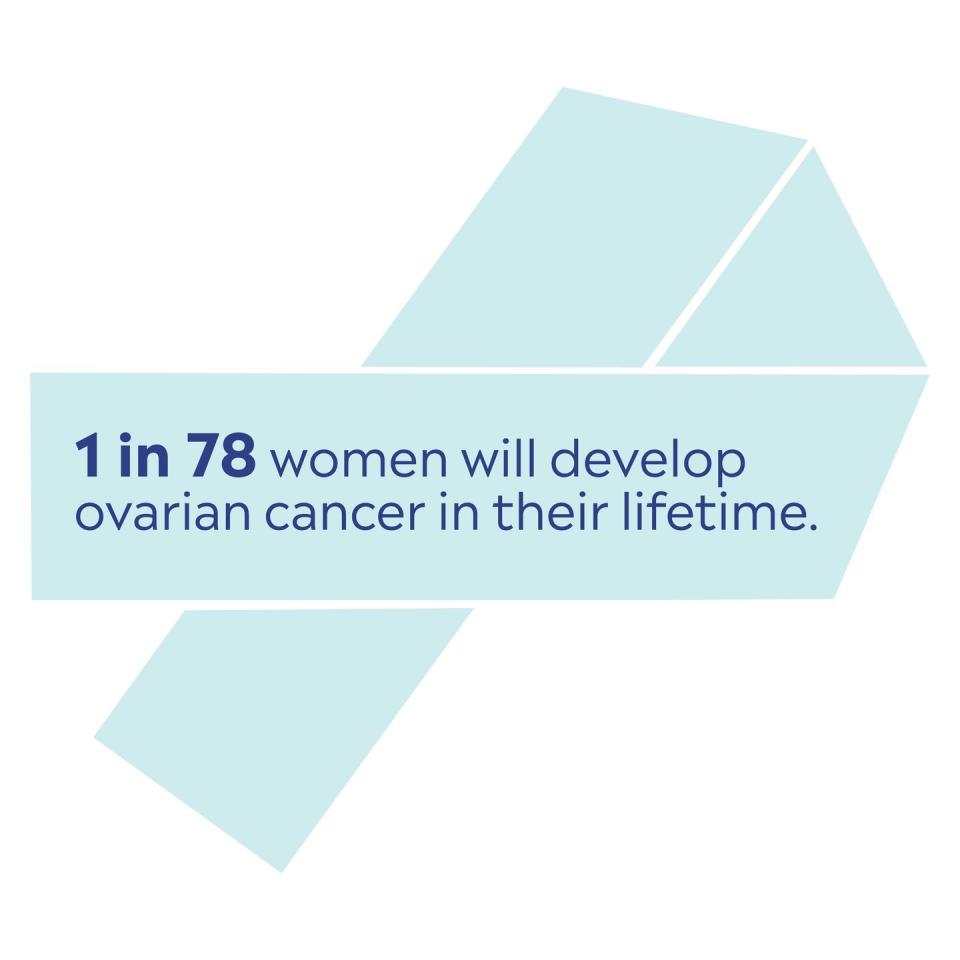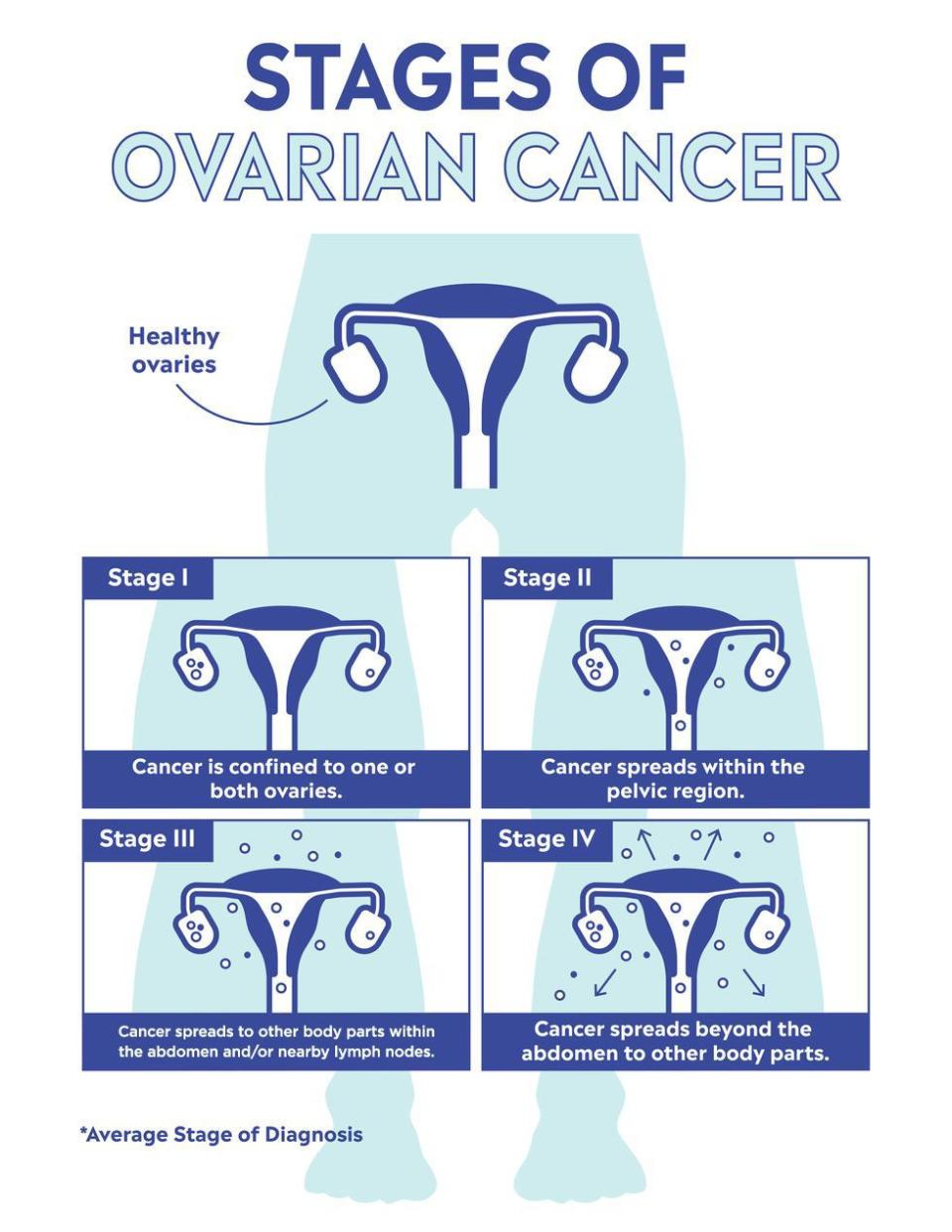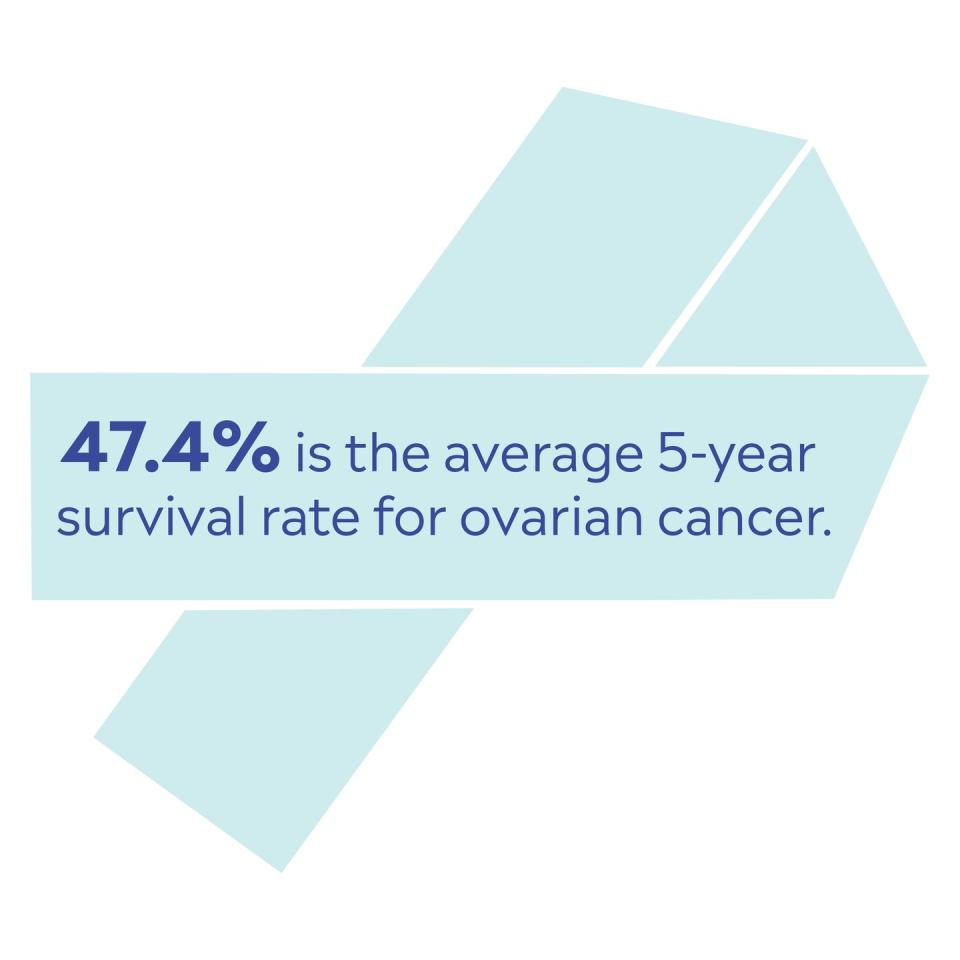Everything You Need to Know to Keep Ovarian Cancer Out of Your Future

Table of Contents
Overview | Types | Risk Factors | Symptoms | Diagnosis | Treatment | Complications | Prevention
What is ovarian cancer?
Each year, more than 20,000 American women are diagnosed with ovarian cancer, a type of cancer that originates in the ovaries. (Quick anatomy refresher: Women have two ovaries, one on each side of the uterus. The ovaries make hormones and produce eggs.) Women who are postmenopausal and have a family history of ovarian cancer may be at greater risk for this cancer.[1]

Ovarian cancer is sometimes considered a “silent killer” because the symptoms are non-specific and can be mistaken for everyday changes associated with aging and gastrointestinal issues.[2] Although ovarian cancer accounts for only 3 percent of all cancers in women, it is the deadliest cancer of the female reproductive system.[3] An estimated 14,070 women will die from ovarian cancer this year[4], however, rates of ovarian cancer and ovarian cancer deaths have declined since 1985 and 1976, respectively.[5]
The earlier ovarian cancer is found, the greater the survival rate.[6]
What are the types of ovarian cancer?
There are three types of ovarian cancer, and they're determined based on the kind of cell in which the cancer develops.[7]
Epithelial: The most common type of ovarian cancer, epithelial tumors start in the outer surface of the ovary. The vast majority of ovarian cancer cases start in the epithelial cells.
Germ cell: These tumors start in the reproductive cells and account for less than 2 percent of ovarian cancers.
Stromal: These tumors start in connective tissue that holds the ovary together and produces estrogen and progesterone. About 1 percent of ovarian cancers are stromal tumors.
What are the risk factors of ovarian cancer?
The exact cause of most ovarian cancer is still unknown, but there are several factors that may increase a woman's risk.[8][10]
What are the symptoms of ovarian cancer?
Ovarian cancer may not cause any symptoms when the disease is in the early stages. “It's a sneaky disease that tends to be quiet until it's spread,” says Stephanie Wethington, MD, MSc, assistant professor of gynecology and obstetrics at Johns Hopkins Medicine.[11] Symptoms to be mindful of are:
Although most people have experienced these symptoms for a day or two, if you have them for a week or two and do not feel better, see your doctor or gynecologist. Also see your doctor immediately if you have any unusual vaginal bleeding.[12][13]
How is ovarian cancer diagnosed?
If you see your doctor about ovarian cancer, he or she will likely ask about your symptoms and family history of cancer.
Diagnosis of ovarian cancer often begins with a pelvic exam. Your doctor will insert gloved fingers into your vagina while pressing the other hand on your abdomen to feel your pelvic organs.
Imaging tests such as CT scans or ultrasounds may be used to get a better look of the inside of your ovary and determine if any mass is worrisome.
Your doctor may order some blood work. Blood count tests will measure the level of red and white blood cells and platelets, which are cells that help stop bleeding. Other blood work may check the functioning of organs such as the kidneys and liver. A third blood test, the CA-125 test, measures the level of a protein called CA-125. Many women with ovarian cancer have high levels of this protein, however other conditions can also increase levels of CA-125.
A biopsy, which involves removing cells from the body and testing them underneath a microscope, is the only way to be certain if a growth is ovarian cancer.[14][15]

How is ovarian cancer treated?
Ovarian cancer is most often treated with a combination of surgery and chemotherapy, but these are not the only options. Talk to your doctor about the best treatment options based on your type and stage of ovarian cancer, as well as the benefits and risks of each treatment. You may also wish to seek a second option before choosing your treatment(s).[16]

Surgery
“Data suggests that removing the cancer is a critical part of treatment and improves long-term survival outcomes,” Dr. Wethington says.[17] During surgery, the doctors will remove the cancerous tissue. Types of surgery for ovarian cancer include:
Hysterectomy: The uterus and sometimes the cervix is removed.
Unilateral salpingo-oophorectomy: One ovary and one fallopian tube are removed.
Bilateral salpingo-oophorectomy: Both ovaries and both fallopian tubes are removed.
Omentectomy: Removal of the omentum, a layer of fatty tissue that covers the abdominal contents like an apron.
Chemotherapy
Chemotherapy uses drugs to slow, stop, or kill cancer cells. You may take pills orally, be given injections into your veins, or receive a shot directly into the muscle. Chemotherapy may be used before or after surgery.
Targeted Therapy
Targeted therapy medications identify and attack cancer cells to change the way they grow, divide, repair, or interact with other cells. These medications do little damage to healthy cells.
Complications of ovarian cancer
The complications of ovarian cancer are often due to the type of treatment used. For example, chemotherapy can lead to fatigue and hair loss, among other side effects. And if a woman has both ovaries removed and has not undergone menopause, the surgery will cause her to experience premature menopause.
Also, ovarian cancer may spread to other surfaces in the abdomen, to other organs in the pelvis, or to lymph nodes in the pelvis.[18]
How to prevent ovarian cancer
“The most important thing to prevent ovarian cancer is an awareness of your body and family history,” Dr. Wethington says. That way you can spot symptoms. Although there is no surefire way to prevent ovarian cancer, some practices associated with a lower risk of the disease include:[19]
Taking oral contraceptives
Particularly for five or more years. Even if you stop taking them, you still have some benefit from the years you did take them, Dr. Wethington adds. However, talk to your doctor, as birth control pills also have some risks and side effects and are not right for every woman.
Gynecologic surgery
While hysterectomy and tubal ligation (getting your tubes tied) reduce your risk of ovarian cancer, it is not recommended to have either procedure strictly for this purpose. You should only have gynecologic surgery if it is medically necessary.
Genetic counseling
If you have a family history of ovarian or breast cancer, you may want to talk to a genetic counselor. This expert will review your personal and family health history and discuss the benefits and risks of genetic testing for BRCA1, BRCA2, and other inherited mutations. With that information, you can then decide if you wish to have genetic testing. Your doctor can refer you to a genetic counselor.[20]
SOURCES
[1] https://www.cdc.gov/cancer/ovarian/basic_info/index.htm
[2] https://www.ncbi.nlm.nih.gov/pmc/articles/PMC2607526/
[3] https://www.cdc.gov/cancer/ovarian/statistics/index.htm
[4] https://www.cancer.org/cancer/ovarian-cancer/about/key-statistics.html
[5] https://www.cancer.org/latest-news/report-ovarian-cancer-rates-continue-to-decrease.html
[6] http://ovarian.org/about-ovarian-cancer/what-is-ovarian-cancer
[7] https://www.cancer.org/cancer/ovarian-cancer/about/what-is-ovarian-cancer.html
[8] https://www.cdc.gov/cancer/ovarian/basic_info/risk_factors.htm, https://www.cancer.org/cancer/ovarian-cancer/causes-risks-prevention/risk-factors.html
[9] https://www.cancer.org/cancer/ovarian-cancer/causes-risks-prevention/what-causes.html
[10] https://www.cancer.org/cancer/ovarian-cancer/causes-risks-prevention/risk-factors.html
[11] Stephanie Wethington, MD, MSc, professor of gynecology and obstetrics at Johns Hopkins Medicine
[12] https://www.cdc.gov/cancer/ovarian/basic_info/symptoms.htm, https://www.cancer.gov/types/ovarian/patient/ovarian-prevention-pdq#section/_4, https://medlineplus.gov/ovariancancer.html
[13] https://www.cancer.gov/types/ovarian/patient/about-ovarian-low-malignant-tumors-pdq
[14] https://www.cancer.org/cancer/ovarian-cancer/detection-diagnosis-staging/how-diagnosed.html, https://www.mayoclinic.org/diseases-conditions/ovarian-cancer/diagnosis-treatment/drc-20375946, https://www.cancer.gov/types/ovarian/patient/about-ovarian-low-malignant-tumors-pdq, https://www.cancer.org/cancer/ovarian-cancer/detection-diagnosis-staging/detection.html
[15] https://www.mayoclinic.org/diseases-conditions/ovarian-cancer/diagnosis-treatment/drc-20375946
[16] http://ovarian.org/about-ovarian-cancer/treatment, https://www.cdc.gov/cancer/ovarian/basic_info/treatment.htm, https://www.cancer.gov/types/ovarian/patient/ovarian-epithelial-treatment-pdq, https://www.cancer.gov/types/ovarian/patient/ovarian-germ-cell-treatment-pdq, https://www.cancer.gov/types/ovarian/patient/ovarian-low-malignant-treatment-pdq
[17] https://www.cancer.org/cancer/ovarian-cancer/treating/targeted-therapy.html
[18] https://www.cancer.org/cancer/ovarian-cancer/detection-diagnosis-staging/staging.html
[19] https://www.cdc.gov/cancer/ovarian/basic_info/prevention.htm, https://www.cancer.org/cancer/ovarian-cancer/causes-risks-prevention/prevention.html
[20] https://www.cancer.gov/about-cancer/causes-prevention/genetics/brca-fact-sheet#q6, https://www.cdc.gov/genomics/resources/diseases/breast_ovarian_cancer/counseling.htm
You Might Also Like

